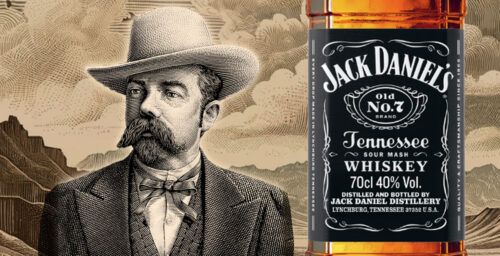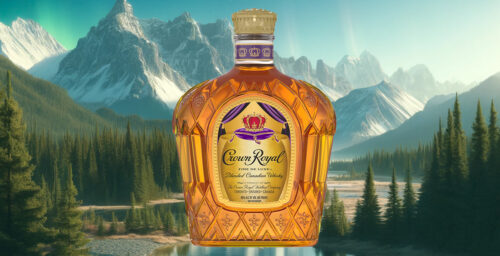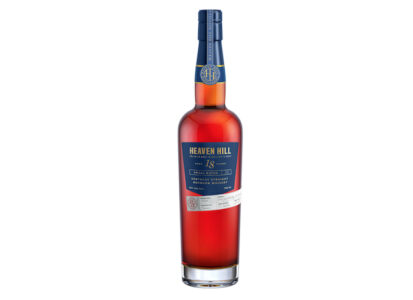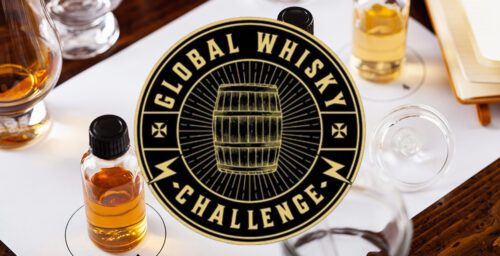Editor’s Note: This whisk(e)y was provided to us as a review sample by the party behind it. This in no way, per our editorial policies, influenced the final outcome of this review. It should also be noted that by clicking the buy link towards the bottom of this review our site receives a small referral payment which helps to support, but not influence, our editorial and other costs.
Forty years ago, the craft distillery scene in America was essentially non-existent. It took a German immigrant with a penchant for home distilling to be among those who would kick-start a wave that became a tsunami. In 1982, Jörg Rupf founded St. George Spirits in Alameda, California. Today, it’s one of America’s oldest independent distilleries. Though Rupf retired in 2010, the distillery is in the good hands of Lance Winters, President and Master Distiller, having joined in 1996, and Dave Smith, Vice President and Head Distiller.
Rupf launched his company with a 65-gallon Holstein pot still. With it, he captured the essence of the fruits grown in the San Francisco Bay area. Even today, first and foremost, St. George is an eau de vie distiller in spirit (ok, pun intended). This extends beyond making fruit brandies, gins with local botanicals, and fruit and coffee liqueurs. Their intent is to distill the base ingredients at peak ripeness from local farmers. They even approach whiskey from this perspective: “We think of single malt whiskey as an eau de vie made of barley, which means using a mash bill bursting with roast levels.”
For their whiskeys, they source two-row barley roasted to five different levels: pale malt, crystal malt, chocolate malt, black patent malt, and alder- or beechwood-smoked malt. The smoked barley is from Bamburg, Germany, in a nod to Rupf’s home country. The barrel program has an Old-World flair, too. Instead of new American oak, St. George uses ex-bourbon barrels to age the whiskey, along with some French oak and various finishing casks. The barrels rest in a rickhouse that is a converted hanger in the former Naval Air Station Alameda right across the bay from San Francisco. It is exposed to the Mediterranean climate of the San Francisco Bay, with hot and dry summers, cool and wet winters, and the famous fog.
With forty years under the belt, St. George Spirits recently released a 40th Anniversary bottling of their single malt whiskey. This is a blend of 14 select honey barrels of whiskey ranging in age and including some of their oldest stock dating back to 1997. Given their focus on fruit, it seems a natural fit for them to include finishing casks that would further impart and highlight fruit notes in the whiskey.
This release included a wide variety of barrel types that held other spirits, including Cognac, Port, and Sherry, as well as California Sauternes-style casks and apple brandy barrels. In a final, and unusual, twist, they included Umeshu barrels for finishing. Umeshu is a Japanese plum wine or liqueur. Ume plums, which are related to apricots, are aged in a spirit with sugar, so I expect this offers a dash of sweet and sour stone fruit notes.
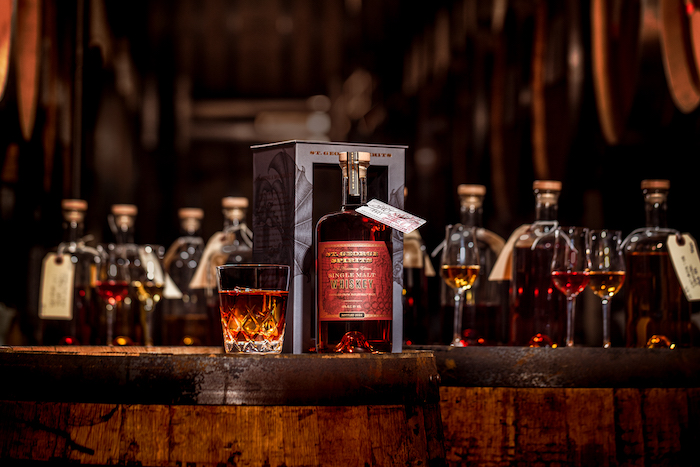
Tasting Notes: St. George 40th Anniversary Edition Single Malt Whiskey
Vital Stats: Age time ranges from 25- to 5-year-old barrels of various types, 48% ABV, mash bill: 100% two-row malted barley, SRP $500/ 750ml bottle.
Appearance: This is golden orange in color with an undertone of mahogany.
Nose: This opens with a note of freshly sliced apples and tropical fruits accented with a touch of anise and black strap molasses. This gives me the impression of spiced rum, with cola spice and hot pepper hints. There’s a touch of green fruit like green pineapple, star fruit, and bittering hops.
Palate: On the palate, I pick up more of the green hoppy note, which is especially pungent when the whiskey is at room temperature. Chilled, this shows flavors of buttered toffee, toasted pecans, and flamed orange peel. It has a distinctive note like an IPA with a mentholated note to the finish. This has a lot going for it. My preference was to sip it at refrigerator temperature or with a whiskey stone, rather than at room temperature or with an ice cube. Water takes the edge off, giving it more of a melted milk chocolate note, highlighting what the Sherry casks bring to the party.

